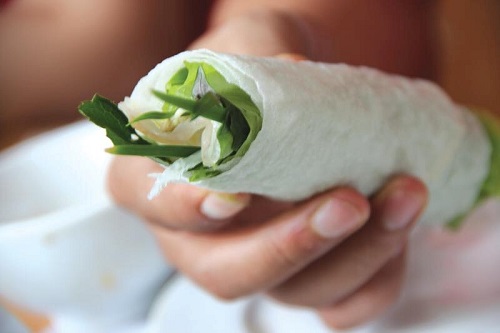Trang Bang rice paper
Rice paper is one of the most popular specialities of Tay Ninh Province’s Trang Bang District. This rice paper is very different from any produced elsewhere because of its special method of production.
In order to make the tasty rice paper, deliciously scented sticky rice is used and the production process involves many stages. First of all, the rice is washed and ground into flour which is then mixed with water and salt to produce a batter mixture. Next, the batter is spread onto a cloth stretched over a wide pot of boiling water to make a double layer of rice paper. The rice paper is dried in the sun for one day and then baked in an oven, but its colour stays white. Finally, it is left outside overnight to absorb humidity.
In Tay Ninh, the rice paper is often served in ‘banh trang cuon thit heo’ (belly pork and vegetables wrapped in soft rice paper) which is one of the local specialities of that area.
In Da Nang there are a few restaurants serving this nutritious dish, including the Hoang Tin restaurant at 125 Hoang Dieu.
 |
| Banh trang cuon thit heo from the Hoang Tin restaurant |
In addition to the special rice paper, the Southern-style vegetable ingredients make this nutritious dish even more delicious. These include sesame sprouts, ambarella leaves, basil, houttuynia and coriander, plus thin slices of purple cabbage, star fruit, unripe bananas, cucumber and carrot. The dish is served with a Tay Ninh-style dipping sauce.
Apart from banh trang cuon thit heo, the Hoang Tin restaurant also offers other dishes including banh canh (rice spaghetti), bun mam (rice vermicelli with anchovy fish sauce), goi cuon tom thit (fresh spring rolls stuffed with shrimp and pork), and banh cuon thit nuong (fresh spring rolls stuffed with grilled pork). The restaurant also offers a home delivery service, allowing busy customers to try the delicious dishes without needing to visit the restaurant.